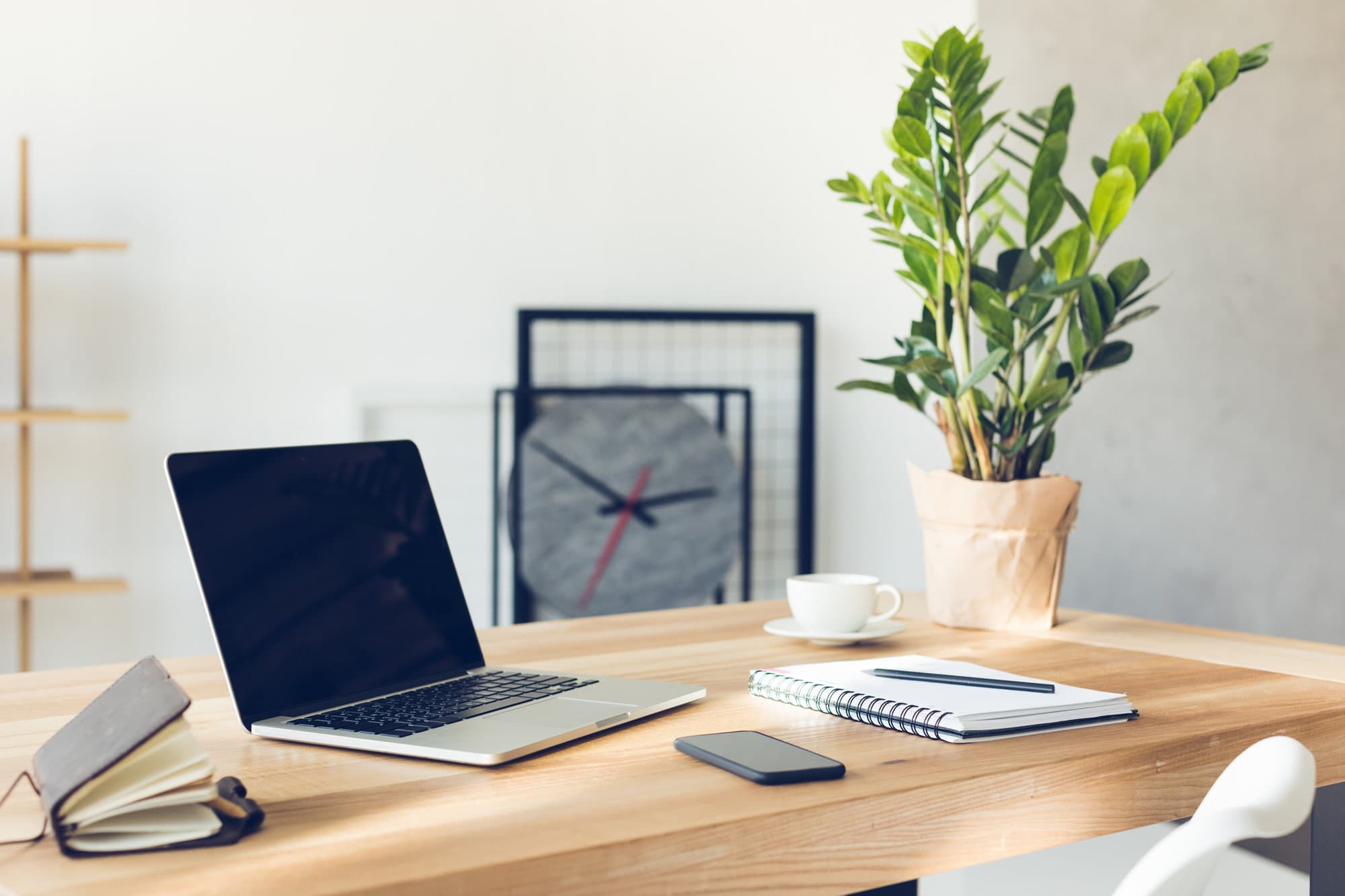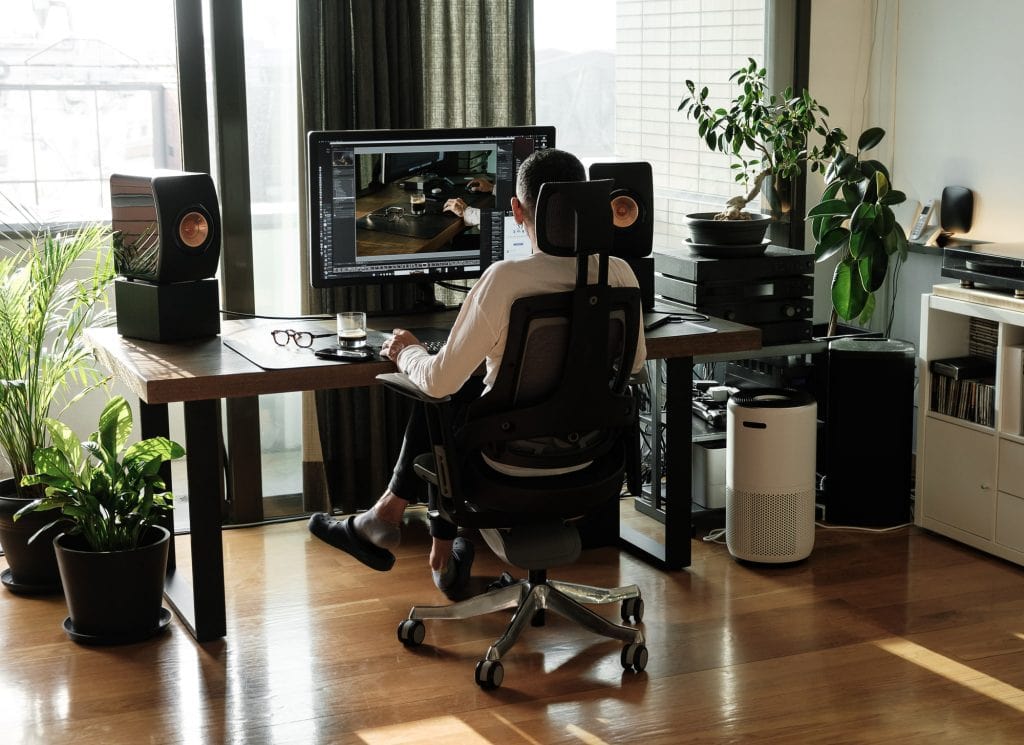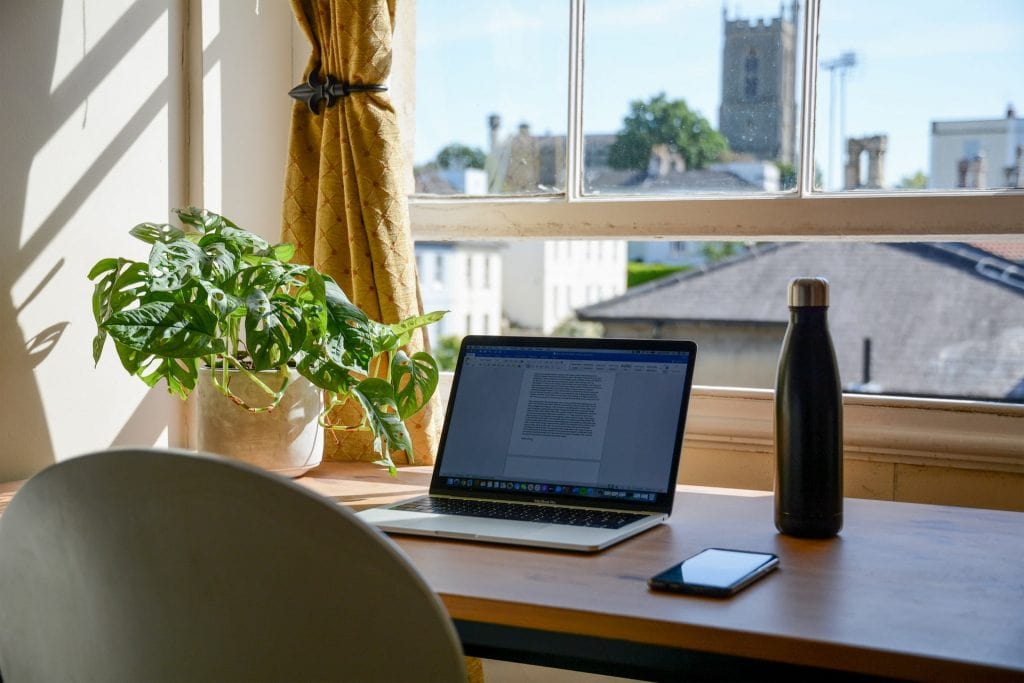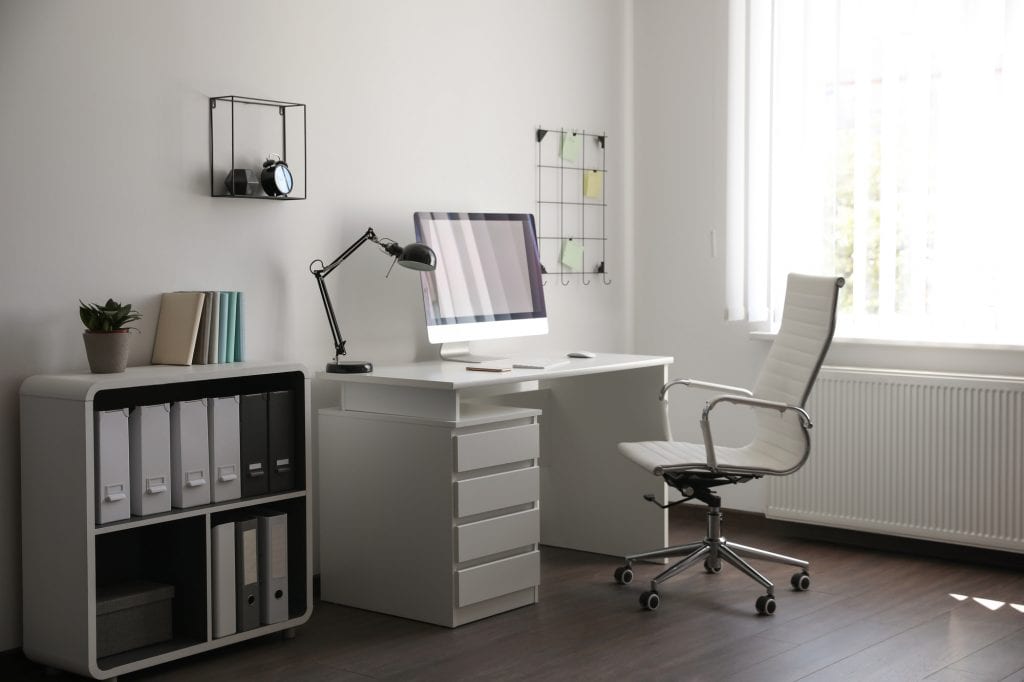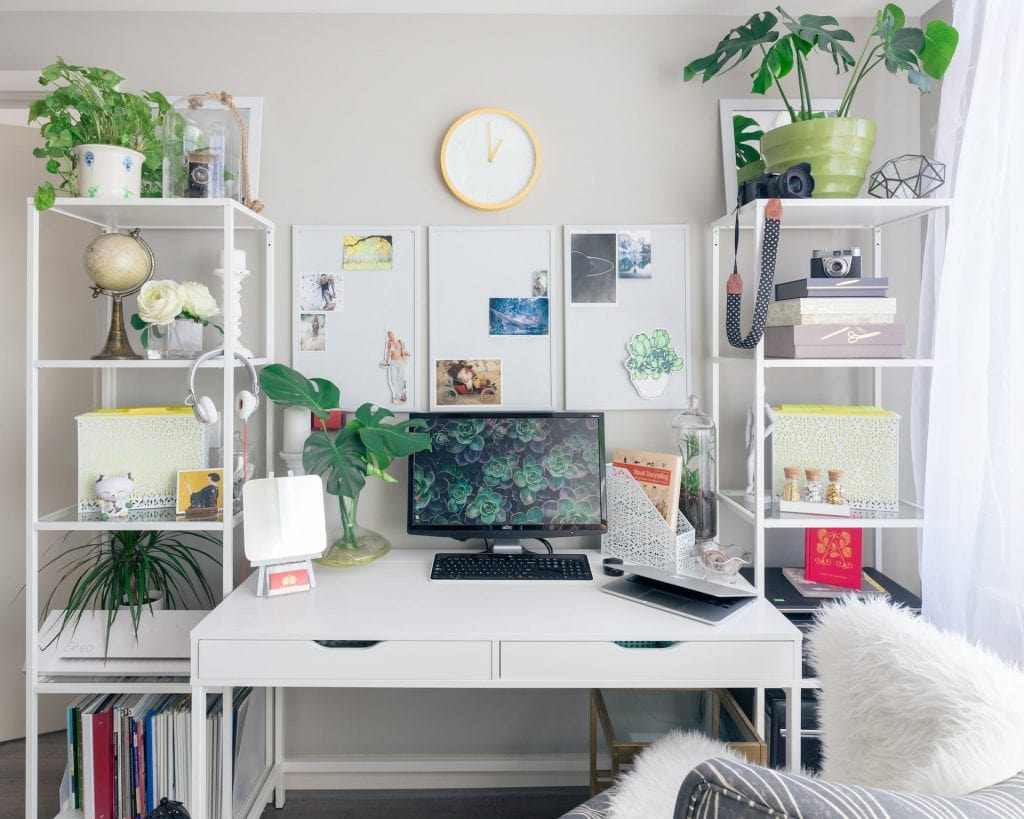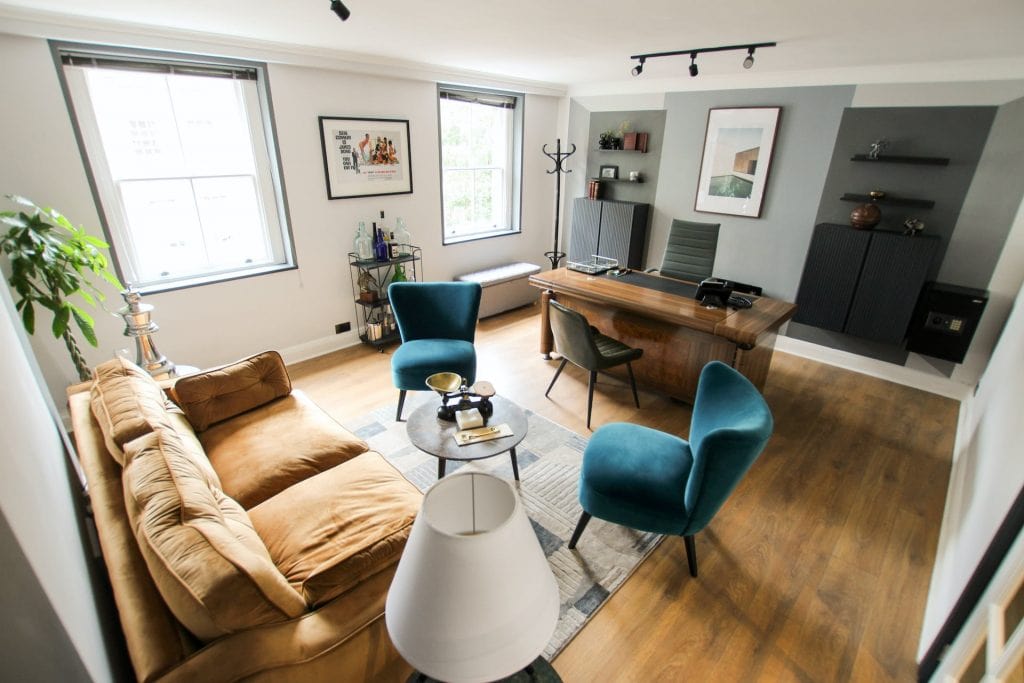The need for a dedicated and stylish home office space has never been more pronounced as more people work from home. A well-designed home office space reflects your style and contributes to your productivity.
Whether you are searching for home office ideas or scouting for a property that meets office design trends and offers ample space, at eXp Realty we can help you find what you need.
The Importance of a Well-Designed Home Office Space
As office trends lean toward remote work, having enough floor space for a dedicated office space impacts buying decisions. Homeowners are no longer content with having a dark and dreary workspace in the basement. Instead, remote work dictates homeowners transition a prominent space into a dedicated and workable home office space.
This shift underscores the importance of integrating practical office design ideas into your living space. A well-thought-out office setup ensures comfort during those long work hours but also amps up the overall aesthetic of your home.
A growing number of professionals, especially in bustling cities like San Francisco, are realizing the potential of creating dedicated space. It’s not just about square footage; it’s about crafting an area that aligns with office design trends and creates a functional and stylish ambiance.
Working in a remote and pleasant environment increases well-being. To make this statement a reality, here are 8 features you need in your home office to boost productivity:
#1 Ergonomic Furniture for Comfort and Productivity
Choosing the right desk chair is a prime element in designing any office space. Modern, traditional, or contemporary design all have merits. However, aside from aesthetics, it’s about comfort and ergonomics.
Investing in an ergonomic chair is essential —an ergonomic chair is a critical piece of office furniture. Choosing an ergonomic chair doesn’t mean sacrificing style. With hundreds of options and office chair features, you can find a chair to meet the demands of your body.
An ergonomic, comfortable chair supports your posture and keeps you comfortable. A correctly balanced ergonomic chair partners with your unique body measurements and office desk. The perfect desk chairs allow you to perform tasks:
- Specific to your job
- It keeps your spine and posture from slouching
- Demands that your body position is in line with your desk and chair
- Ensures you’re comfortable
- Prevents bad habits
- Works with your chair, computer, telephone
Desks have evolved to meet the demands of remote work and computer technology. These instrumental furniture pieces are integral to your office’s design elements. An adjustable desk allows you to alternate between sitting and standing and improves your health.
Some design principles may impact the versatility of a desk. A modern desk with clean lines or a traditional desk that echoes the past can inspire and complement your office design idea. Once you have a concept, you only need the perfect office space in a new home.
You can also integrate a dining table, kitchen table, or tall coffee table into your design elements. Ergonomic accessories impact your comfort and productivity. An ergonomic keyboard and monitor help you perform better for longer. These ergonomic tools ensure you don’t strain your hands from prolonged typing, and keeping a monitor at the precise eye level helps prevent neck strain that can lead to nagging side effects.
#2 Adequate Lighting for Optimal Focus
Lighting plays a pivotal role in any office design. The right amount and type of lighting are beneficial on several levels. It influences your mood and productivity and reduces eye strain.
Natural light sources radiate warmth and create a happier ambiance than harsh overhead or antiquated fluorescent lighting. Poor lighting can cast glare onto the computer screen and cause eye strain.
Positioning your desk near a window to utilize natural light can be refreshing and calming, especially if you view a spectacular skyline or a serene neighborhood. Adding natural elements like potted plants can also add a touch of tranquility.
Adjustable task lighting is another way to shine light onto a work surface without consuming unnecessary energy and creating excess heat. Investing in a high-quality desk or floor lamp helps you focus the light and is perfect when working late or when natural light is elusive on cloudy days.
Talk to a lighting professional about desk lamps or overhead lighting that provides soft ambient light to set a relaxed vibe. Lamps and light fixtures are an investment and can set the design tone for a home office space.
#3 Declutter and Organize for Enhanced Efficiency
A clutter-free environment maximizes productivity and helps to reduce stress. A tidy office space also promotes mental well-being. It’s not just about white walls or freeing up floor space; it’s about cultivating an environment that minimizes distractions and maximizes creativity without sacrificing personal style.
Storage solutions are also top design principles in office design trends. A littered desk hampers your workflow. Many creative and practical solutions exist to store your documents, office supplies, and office paraphernalia.
Built-in storage, like cabinets or stylish storage boxes, are an excellent solution to align your office design trends with practicality. Cabinets and desk organizers keep stationery and documents neat and secure and help with workflow.
For inspiration, visit your local office supply and furniture store. Make a list of what is truly important in functionality to you. You don’t have to sacrifice style, and many attractive and innovative storage options exist.
One of the best tricks in office space design is finding a solution to banish unattractive cables. Cable management is a must in our tech-driven environment. Coping with tangled cords is a challenge every office worker faces. Implementing a cable management system streamlines your workspace and promotes safety.
Storage space in the form of accessories like shelves, cabinets, and desk organizers are prime tools that can look great and improve performance. Great office design utilizes vertical space on an office wall with attractive shelving for decorative or practical solutions.
#4 Personalization and Inspiration for Creativity
Your office isn’t just a functional space; it reflects your style and creativity. Adding elements that resonate with you can infuse inspiration into your daily routine. Think of it as crafting an environment that energizes and motivates you.
Art Work
Motivational artwork or quotes can set the tone for the day. Choose a gallery wall with a painting that inspires or motivates you. Whether it’s a quote from a renowned personality or an artwork that resonates with your office design, these elements boost morale.
Decorative Plants
Indoor plants are more than just decorative. Plants like the snake or any potted plant add a touch of greenery and enhance productivity and mood. Keep a plant on your desk, the floor, a shelf, or hanging pots. They purify air, reduce stress, and add pops of color.
Vision Boards
Vision boards are a design staple in modern office design trends. They’re not just about goal-setting; they’re visual reminders. Printed goals of professional milestones, dream destinations, or personal goals on a vision board serve as a dedicated motivational tool.
#5 Tech Upgrades for Seamless Connectivity
Having a functional home office space and quality of tech tools go hand in hand. As office work shifted to the remote worker’s home, staying abreast of tech trends became imperative to maintain productivity and streamline tasks.
A high-speed internet connection is the backbone of a modern home office. With online meetings, cloud-based collaborations, and real-time project management, a robust and reliable internet connection is non-negotiable. To be successful, you must invest in a high-speed internet connection and provider.
Upgrade your computer. This tool and its accessories significantly impact your daily tasks and your efficiency. A powerful computer, an ergonomic keyboard, and a high-resolution monitor enhance your job performance.
Although not imperative, investing in smart home integration transforms a traditional office setup into a modern functional space. Imagine controlling your office lights, temperature, and coffee machine with a single voice command. Integrations translate into convenience and add style to your office space.
#6 Soundproofing and Noise Reduction
Creating a serene and distraction-free workspace is significant. Noise disruptions hamper concentration and affect work quality and efficiency.
Soundproofing your office space is a wise investment. Acoustic panels or foam tiles can drastically reduce noise disturbances from the street or family.
Noise-canceling headphones are a modern office worker’s best friend, especially for those who don’t have a dedicated office space. These headphones create an instant quiet zone, allowing you to work undisturbed and focus on tasks. Headsets are ideal for establishing dedicated quiet hours to concentrate and boost productivity and efficiency.
#7 Incorporating Breakout Areas for Relaxation
Work without relaxation can lead to burnout. A well-thought-out office design idea incorporates spaces that allow for brief respites, ensuring that the mind remains sharp and creativity flows.
Every office needs a cozy corner. Whether it’s an ergonomic, comfy chair or a bean bag, having a spot to rejuvenate should be part of the home office space design. Remind yourself that it’s okay to enjoy a refreshing beverage and a break to recharge.
A mini-fridge or a coffee station is a delightful addition to your office space. Having refreshments close means you don’t have to leave your office.
Creating a relaxing space by surrounding yourself with plants and calming decor creates a sanctuary within your office. Incorporating natural elements, color, art, or a mini waterfall can transform an ordinary space.
#8 Future-Proofing and Flexibility
In an evolving world, adaptability is essential. Your home office space should serve your current needs and be flexible enough to adapt to future requirements. Your space needs to grow with you whenever there’s a shift in your career, an upgrade in technology, or a change in office design trends.
Designing a modular and adaptable workspace is essential. Use L-shaped desks and adjustable shelves, or upgrade a favorite dining room table into a serviceable desk. If you get the basics of your design right and your work needs change, your office can quickly transition.
Technology doesn’t rest, and investing in tech that can be upgraded, like modular PCs or monitors with versatile connectivity options, allows you and your office to remain current. Cloud-based solutions are great for integrating across devices, ensuring you’re always connected and updated.
The global shift toward remote work has made many professionals explore hybrid work arrangements. A dedicated office space at home allows people the flexibility to work from home and a corporate office simultaneously. It offers flexibility and the best of both worlds.
Key Takeaways
A well-designed and equipped home office space is necessary in today’s professional landscape. The knowledgeable eXp agents understand that remote work and balancing an office design is a significant part of a home search.
Adequate lighting, organization, and design aren’t trivial but tools that help you perform at your best. It also means drawing on technology, making improvements like soundproofing, utilizing efficiency with design principles, and relying on ergonomics to enhance your performance.
When you’re ready to shape your home office space, or to explore homes with built-in office spaces on the market right now, check out our property listings in your desired area. You can filter your search to any criteria you’re interested in, or sign up for daily or weekly updates when new listings come on the market.
FAQs: Home Office Space
Investing in real estate and creating a home office space is a big step. We have compiled some frequently asked questions, so if you still have questions, it may be answered below.
How do I make space for my office at home?
Find the dead spaces or underutilized areas in your home. Turn a guest room or bonus room into a multipurpose space. Or, if you’re limited on square footage, look for an unused corner, under the stairs, or even a large closet, and turn them into a dedicated office nook.
What is the best room for a home office?
Ideally, the best room for a home office is a quiet room with ample space, good natural light, minimal foot traffic, and low street noise.
How much space do you need for a home office?
It depends on your job requirements and how much desk space your computer, office supplies, and other instruments you need. A minimum of 50-75 square feet is a good start for a semi-functional home office.
Should you put a desk in front of a window?
Placing a desk before a window can offer great natural light and a pleasant view. However, direct sunlight causes screen glare.
Can my home office be in my bedroom?
Yes, but create a clear distinction between your work and sleep space. Using room dividers or different color schemes can help or sacrifice closet space to make a mini-office.
What are the 3 general rules for qualifying your home office as a business expense?
Always discuss this with your tax accountant, but here are the basics:
- Exclusive and regular use: The space must be used solely for business.
- Principal place of business: It should be the primary location where you conduct your business.
- No other fixed location: You don’t have another place where you conduct substantial administrative tasks or management activities.

